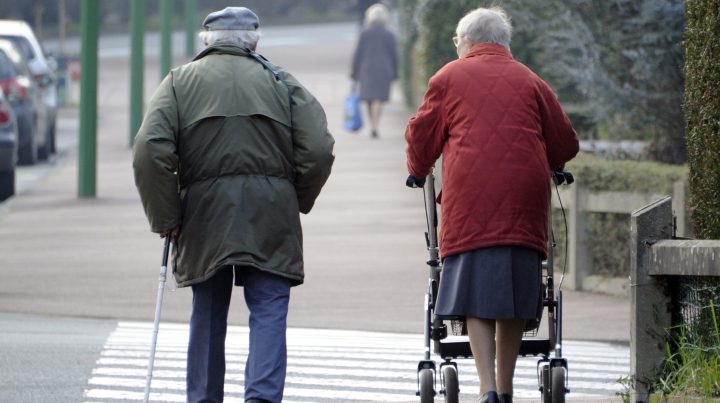
Why “aging in place” is a growth industry

“My Economy” tells the story of the new economic normal through the eyes of people trying to make it, because we know the only numbers that really matter are the ones in your economy.
Door widths, whether bathroom walls can support grab bars and the height of light switches are among the many items Dawn Mahiya checks when evaluating homes for her clients.
As a certified aging in place specialist, Mahiya helps older people and people with disabilities figure out how to modify their homes to better fit their needs.
Half of her clients, she said, are “people who are looking forward in their life … and the other half are generally their children who are trying to prepare their parents.”
The average cost of a private room in a nursing home exceeds $100,000 a year, according to the American Council on Aging.

“It’s a lot more economical to continue to live in your own home as long as possible,” Mahiya said. “[But] to do that, quite frequently, modifications need to be made.”
Modifications that can make homes safer and more comfortable for people with limited mobility include wider entrances, walk-in showers, pull-down cabinets and grab bars in hallways and bathrooms.
“And some things that a lot of people don’t even think about — those thermostat controls, they are way too high for anybody in a wheelchair,” Mahiya said.
By 2030, all members of the baby boom generation (people born between 1946 and 1964) will be at least 65 years old, driving demand for Mahiya’s services. A 2021 report sponsored by a company in the care industry estimated that the “aging in place” market exceeds $150 billion annually.
“There’s going to continue to be a great need for certified aging in place specialists and not just for people 65 and older,” Mahiya said. Of the 1 in 4 U.S. adults living with a disability, the Centers for Disease Control and Prevention estimates that 11% have serious difficulty walking or climbing stairs.
Mahiya herself has personal experience with the need for support and accommodation. “When I was younger, I was run over by a car,” she said. “I know exactly how it feels to be in a wheelchair.” Though she no longer uses a wheelchair, she recognizes that her and her husband’s mobility may decline as they age.
“The last house that I purchased … I made sure that even though neither one of us is in a wheelchair right now, I made it so it can be wheelchair-accessible,” she said.
Do you have a story about aging in this economy? Tell us about it using the form below and you might be featured in a future edition of “My Economy.”
There’s a lot happening in the world. Through it all, Marketplace is here for you.
You rely on Marketplace to break down the world’s events and tell you how it affects you in a fact-based, approachable way. We rely on your financial support to keep making that possible.
Your donation today powers the independent journalism that you rely on. For just $5/month, you can help sustain Marketplace so we can keep reporting on the things that matter to you.












